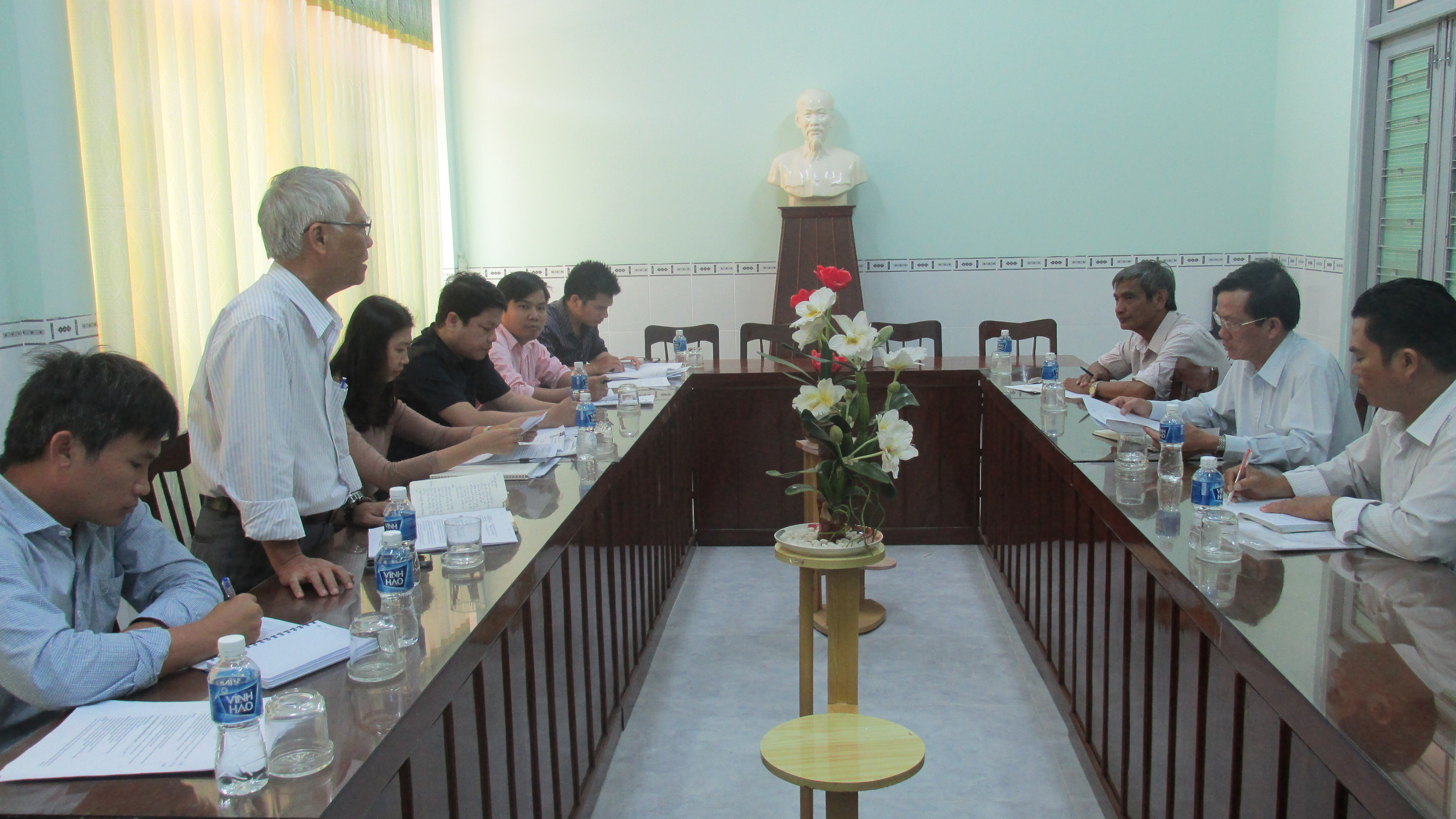In this situation, Ministry of Agriculture and Rural Development and the United Nation in Vietnam have assigned some mission teams to implement short assessment on the losses caused by drought and salinization, submit reports to United Nation and other international agencies in Vietnam on demands of the urgent support to response to drought and salinization in the affected areas.
 |
The mission team’s members includes officers from Ministry of Agriculture and Rural Development/Steer Committee of disaster prevention, the Uinited Nation in Vietnam and other international non-government organization working on disaster prevention. The assessing time is from Mar 21 to Mar 25 2016 and ongoing in provinces including Ben Tre, Ninh Thuan, Binh Thuan, Gia Lai, Kon Tum and Kien Giang.
Disaster Prevention and Minigation Centre has assgined officer participating in the mission team in Binh Thuan, gaining some information as follows:
Based on the latest statistic on Mar 22, 2016, the rate of reservoir capacity in whole province only reaches 33%. After providing water for Winter-Spring season 2015 -2016, the water source of reservoir is priority for domestic water, livestock and perennial (dragon fruit, cashew, tangerine, mango…). However, the provision in some districts, communes are limited at the minimum level until the end of April, 2016. At the time of assessment, the surveyed sites are just in the early period of drought so it's hard to see the comprehensive picture of drought in the entire province. However, with the meteorological - hydrological information forecast no rain in near future, the drought situation in Binh Thuan becomes more serious in next one or two months.
In order to response to the current situation, Binh Thuan province actively organize a series of activities using the provincial budget such as: setting up assessment teams, Board of drought prevention at different levels; promoting the propaganda, advocacy on saving water, sharing water source; completing upgrade, construction, assembly the ongoing or approved hydraulic works; supporting money to the poor, the near-poor, the minority community, families under the preferential treatment policy, etc to buy domestic water.
However, all solutions are just temporary responses to the specific situations, which are not permanent and sustainable.
The mission team’s members includes officers from Ministry of Agriculture and Rural Development/Steer Committee of disaster prevention, the Uinited Nation in Vietnam and other international non-government organization working on disaster prevention. The assessing time is from Mar 21 to Mar 25 2016 and ongoing in provinces including Ben Tre, Ninh Thuan, Binh Thuan, Gia Lai, Kon Tum and Kien Giang.
Disaster Prevention and Minigation Centre has assgined officer participating in the mission team in Binh Thuan, gaining some information as follows:
Based on the latest statistic on Mar 22, 2016, the rate of reservoir capacity in whole province only reaches 33%. After providing water for Winter-Spring season 2015 -2016, the water source of reservoir is priority for domestic water, livestock and perennial (dragon fruit, cashew, tangerine, mango…). However, the provision in some districts, communes are limited at the minimum level until the end of April, 2016. At the time of assessment, the surveyed sites are just in the early period of drought so it's hard to see the comprehensive picture of drought in the entire province. However, with the meteorological - hydrological information forecast no rain in near future, the drought situation in Binh Thuan becomes more serious in next one or two months.
In order to response to the current situation, Binh Thuan province actively organize a series of activities using the provincial budget such as: setting up assessment teams, Board of drought prevention at different levels; promoting the propaganda, advocacy on saving water, sharing water source; completing upgrade, construction, assembly the ongoing or approved hydraulic works; supporting money to the poor, the near-poor, the minority community, families under the preferential treatment policy, etc to buy domestic water.
However, all solutions are just temporary responses to the specific situations, which are not permanent and sustainable.